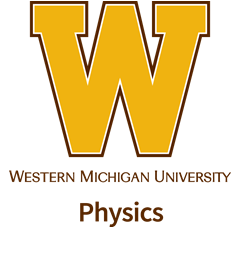Speaker
Dr
Mark Zammit
(Los Alamos National Laboratory)
Description
Studies of molecular plasmas both in local thermodynamic equilibrium (LTE) and non-LTE require state-resolved (electronic, vibrational and rotationally resolved) transition cross sections or rate coefficients to calculate populations (for non-LTE plasmas), opacities and emissivities. For both electron- and photon-molecule data there is a lack of comprehensive state-resolved data available, particularly for transitions that involve electronically excited states.
Here we present state-resolved results of photodissociation and radiative association of H$_2^+$ and its isotopologues (D$_2^+$, T$_2^+$, HD$^+$, HT$^+$, and DT$^+$). We note that going beyond the commonly utilized “two-level” approximation of H$_2^+$ could be important in astrophysical models when dealing with radiation temperatures that can access photon wavelengths around 100 nm. For example at these wavelengths, at a material temperature of 8400K, the photodissociation cross section via the (second electronically excited) 2$p \pi_u$ state is over three times larger than the photodissociation cross section via the (first electronically excited) 2$p \sigma_u$ state.
We will also present the first convergent close-coupling calculations of electron scattering from the hydrogen molecule H$_2$ [1,2]. These calculations are generally in good agreement with experiment for all major scattering cross sections but differ with commonly “accepted” results by approximately 20% for excitation to the Lyman-Werner levels.
[1] M. C. Zammit et al. Phys. Rev. Lett. 116, 233201 (2016).
[2] M. C. Zammit et al. Phys. Rev. A 95, 022708 (2017).
Author
Dr
Mark Zammit
(Los Alamos National Laboratory)
Co-authors
Dr
Christopher Fontes
(Los Alamos National Laboratory)
Dr
David Kilcrease
(Los Alamos National Laboratory)
Prof.
Dmitry Fursa
(Curtin University)
Dr
Eddy Timmermans
(Los Alamos National Laboratory)
Prof.
Igor Bray
(Curtin University)
Dr
James Colgan
(Los Alamos National Laboratory)
Mr
Jeremy Savage
(Curtin University)
Dr
Peter Hakel
(Los Alamos National Laboratory)

